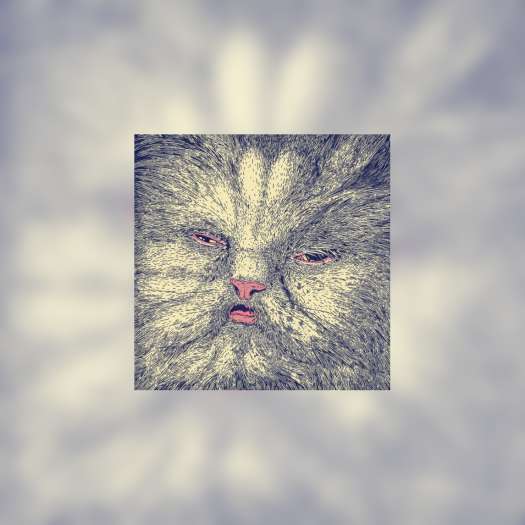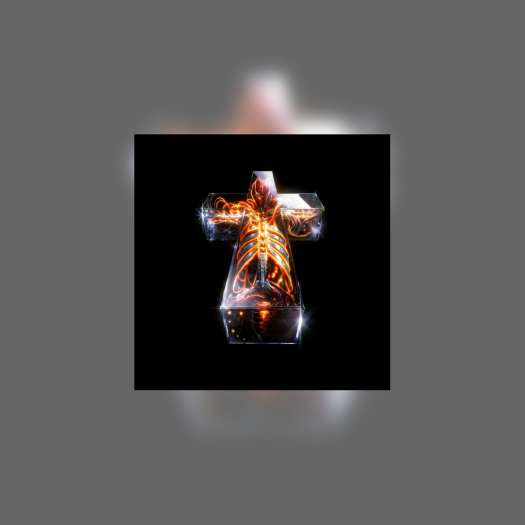Billy Mavreas is sitting behind the counter of his antique shop in the north end of Montreal's St. Laurent Blvd., inking a poster for a local metal band's upcoming gig. "They wanted something evil'," he says of its claw-like flames. Though he hasn't drawn concert posters in years ("I was tired of working for free"), his reputation as the city's premier poster artist holds fast, thanks to his prolific postering in the late 80s and 90s for musicians like Rufus Wainwright and Kinnie Starr, and a book called Mutations, which collected many of these works four years ago. Since then, though, Mavreas's career has ignited.
He's drawn an album cover for Montreal electronic wiz Jon Asencio, taught art to at-risk youth in an alternative high school, even added "vocal styling" to a prog-rock album. But above all is his store, Monastiraki. It used to be his father's shop, but now echoes Mavreas's personality. The collection of bric-a-brac here a Victorian mirror, there a musty typewriter resembles nothing more than a giant toy box, and it's the perfect base for his eclecticism. With his shock of hazelnut hair and ragged growth of beard, Mavreas looks younger than his 33 years. And sometimes his inner ten-year-old, which seems to be crouching behind every dusty cabinet, emerges through his emphatic speech or wild hand gestures.
"I'm just playing," he announces with a wave at the emporium. He took the shop over last year and turned the front half into a gallery to display and sell the work of Canadian artists, mostly cartoonists. "It's turning into my own ever-changing installation piece." Paintings, illustrations, books and more, from 30 Canadian artists (including Vancouverites Marc Bell and Amy Lockhart), line its walls. Many of the cartoonists are local, finding their way into Monastiraki through La Voce del Popolo, a Montreal arts zine for which Mavreas gathers comics. "Montreal's comics scene is such a mix of genres and cultures," he explains. "People here grew up with bandes dessinée albums, and a mix of Crumb, the Fantastic Four, Tintin, etc. Comics were not relegated to adolescent male fantasy, so an ongoing [comics] culture developed." Within so "vibrant and varied" a comics scene, Mavreas grins, "I have plenty of cartoonists to exploit."
Mavreas, of course, can count himself among the exploited. He's shown his own work world-wide in anthologies from Canada, the United States and France. And in December, his first hardcover collection of comics will slide onto shelves. After years of drawing posters, Mavreas found he had "the storytelling bug."
"I've been drawing for a long time," he says, "but making something with a narrative structure is new to me." The Overlords of Glee bundles 80 pages of comics dating back to 1998. It presents his recurring "stable of entities": bunnies ("They're not rabbits") that are "clued in to dimensional portals,"; doggies that "fall into hallucinations" and squash-like blobs that represent a "phallus/vulva dichotomy."
"If I'm going to portray sexuality, I'm not going to put humans in it: it cheapens it," he grimaces. "I'd rather have plants blossoming or transforming before the eye."
The stories themselves inspired by pop art, sci-fi and dreams are surreal and convoluted; Matt Groening's Life in Hell re-imagined as psychedelic delirium. One piece Point Intégraal, the incomprehensible tale of "a seeker who becomes the fourth sentinel in a triad of sentinels" is Mavreas's version of "a wanky guitar solo in progressive rock." Others are covered with intricate hieroglyphs, which Mavreas claims grew out of a love for band logos. Many were originally drawn on cue cards and rearranged into a single story, a "collage approach" he found liberating. "If I plan out the story from the beginning, I have no motivation to ink it. [This way,] I would draw the sequences I wanted to draw, and combine them," sometimes sending them though a Xerox to create elaborate multi-layered effects. "I'm old-school. I like hands-on cut and paste. I don't have a computer, I tend to be pretty slow with new technologies." The collection, Mavreas hopes, is a "nebulous unity" that demands careful study. "I want the reader to feel that they're reading," despite the fact that many of the stories are "silent" or wordless. Silent stories can be read by a global audience in fact, a magazine in Slovenia plans to run one of his stories in the new year. "The potential of an international storytelling medium at a low cost is mind-blowing to me."
He's drawn an album cover for Montreal electronic wiz Jon Asencio, taught art to at-risk youth in an alternative high school, even added "vocal styling" to a prog-rock album. But above all is his store, Monastiraki. It used to be his father's shop, but now echoes Mavreas's personality. The collection of bric-a-brac here a Victorian mirror, there a musty typewriter resembles nothing more than a giant toy box, and it's the perfect base for his eclecticism. With his shock of hazelnut hair and ragged growth of beard, Mavreas looks younger than his 33 years. And sometimes his inner ten-year-old, which seems to be crouching behind every dusty cabinet, emerges through his emphatic speech or wild hand gestures.
"I'm just playing," he announces with a wave at the emporium. He took the shop over last year and turned the front half into a gallery to display and sell the work of Canadian artists, mostly cartoonists. "It's turning into my own ever-changing installation piece." Paintings, illustrations, books and more, from 30 Canadian artists (including Vancouverites Marc Bell and Amy Lockhart), line its walls. Many of the cartoonists are local, finding their way into Monastiraki through La Voce del Popolo, a Montreal arts zine for which Mavreas gathers comics. "Montreal's comics scene is such a mix of genres and cultures," he explains. "People here grew up with bandes dessinée albums, and a mix of Crumb, the Fantastic Four, Tintin, etc. Comics were not relegated to adolescent male fantasy, so an ongoing [comics] culture developed." Within so "vibrant and varied" a comics scene, Mavreas grins, "I have plenty of cartoonists to exploit."
Mavreas, of course, can count himself among the exploited. He's shown his own work world-wide in anthologies from Canada, the United States and France. And in December, his first hardcover collection of comics will slide onto shelves. After years of drawing posters, Mavreas found he had "the storytelling bug."
"I've been drawing for a long time," he says, "but making something with a narrative structure is new to me." The Overlords of Glee bundles 80 pages of comics dating back to 1998. It presents his recurring "stable of entities": bunnies ("They're not rabbits") that are "clued in to dimensional portals,"; doggies that "fall into hallucinations" and squash-like blobs that represent a "phallus/vulva dichotomy."
"If I'm going to portray sexuality, I'm not going to put humans in it: it cheapens it," he grimaces. "I'd rather have plants blossoming or transforming before the eye."
The stories themselves inspired by pop art, sci-fi and dreams are surreal and convoluted; Matt Groening's Life in Hell re-imagined as psychedelic delirium. One piece Point Intégraal, the incomprehensible tale of "a seeker who becomes the fourth sentinel in a triad of sentinels" is Mavreas's version of "a wanky guitar solo in progressive rock." Others are covered with intricate hieroglyphs, which Mavreas claims grew out of a love for band logos. Many were originally drawn on cue cards and rearranged into a single story, a "collage approach" he found liberating. "If I plan out the story from the beginning, I have no motivation to ink it. [This way,] I would draw the sequences I wanted to draw, and combine them," sometimes sending them though a Xerox to create elaborate multi-layered effects. "I'm old-school. I like hands-on cut and paste. I don't have a computer, I tend to be pretty slow with new technologies." The collection, Mavreas hopes, is a "nebulous unity" that demands careful study. "I want the reader to feel that they're reading," despite the fact that many of the stories are "silent" or wordless. Silent stories can be read by a global audience in fact, a magazine in Slovenia plans to run one of his stories in the new year. "The potential of an international storytelling medium at a low cost is mind-blowing to me."




